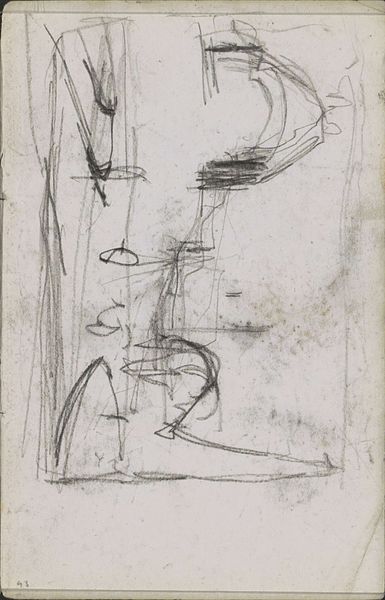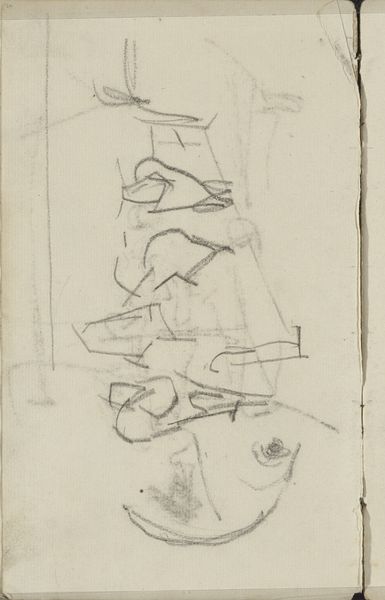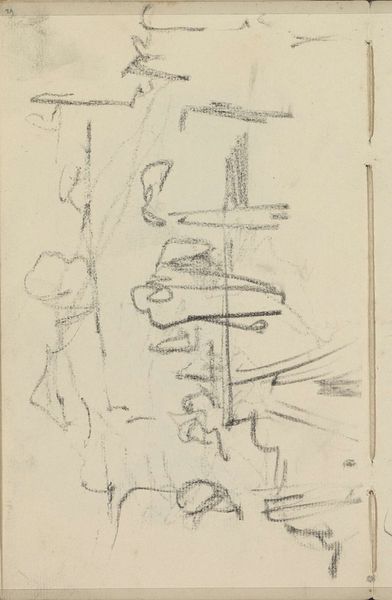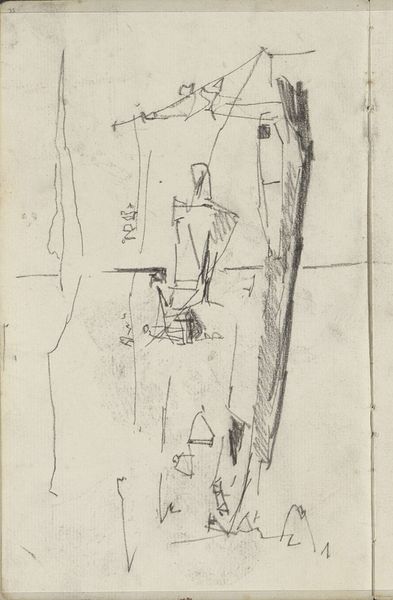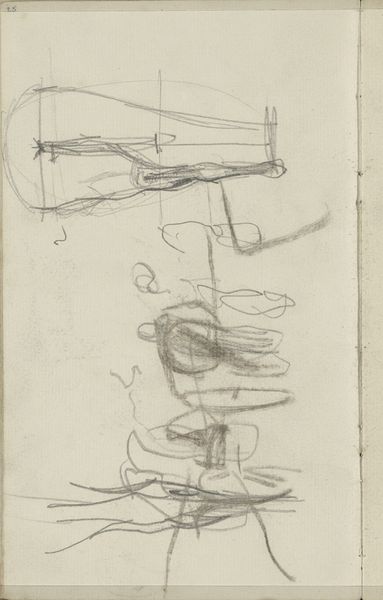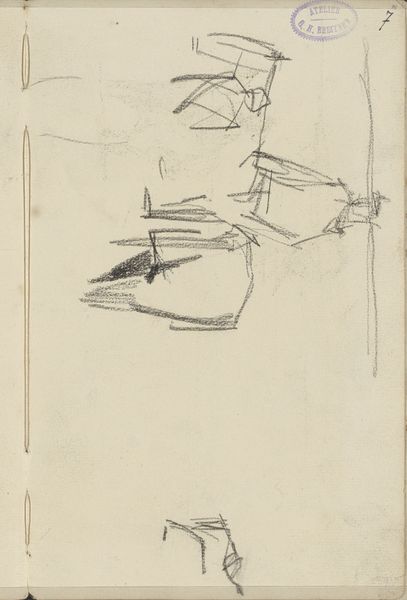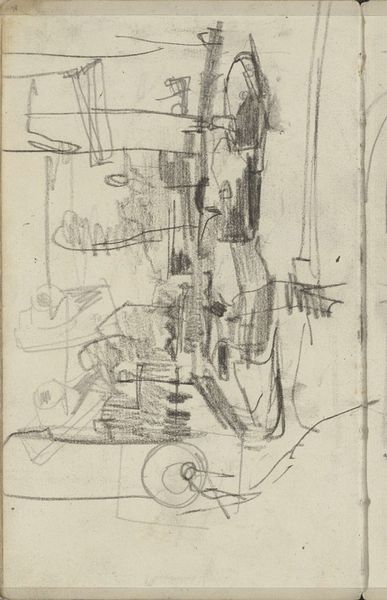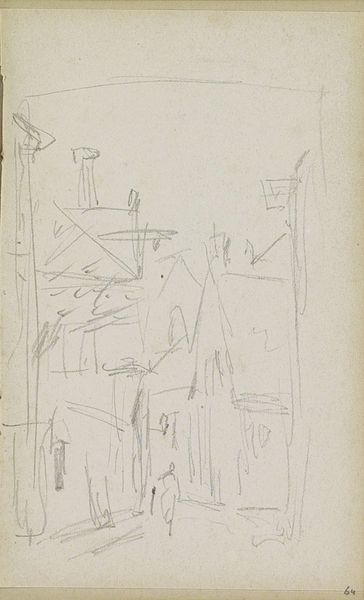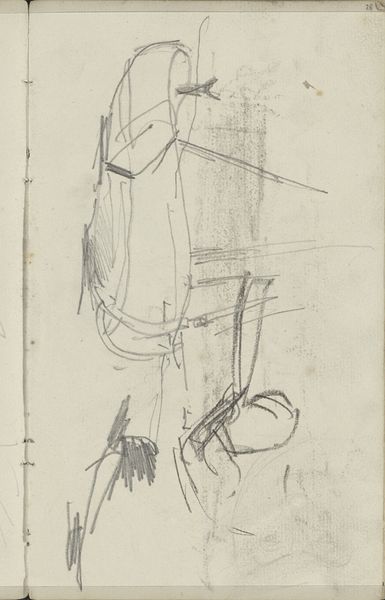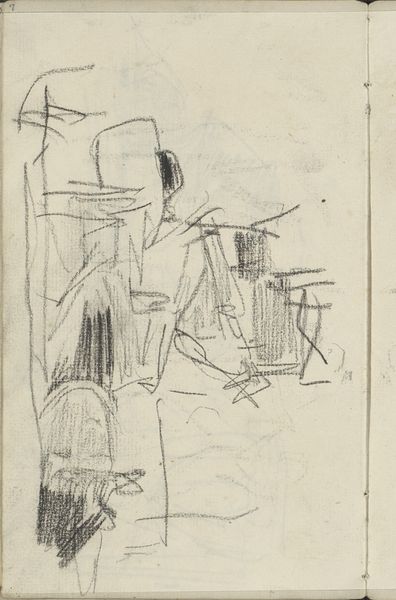
drawing, paper, pencil
#
drawing
#
impressionism
#
landscape
#
figuration
#
paper
#
sketchwork
#
character sketch
#
pencil
Copyright: Rijks Museum: Open Domain
Curator: Breitner’s "Figuren, mogelijk op straat," possibly from the early 1880s, is a study in pencil on paper held at the Rijksmuseum. Editor: My first thought is how ephemeral it feels. There's a sketchiness, a lack of fixed detail, that makes the figures seem like they could dissolve into the urban atmosphere at any moment. Curator: It's typical of his approach, capturing fleeting moments of everyday life. The pencil strokes themselves carry meaning, evoking movement and a sense of immediacy. We see recurring motifs too, that echo through his later work, for example the veil-like head coverings are similar to those that feature heavily in other drawings. Editor: I am especially drawn to the suggestion of a narrative. Who are these figures? Are they marginalized members of society, rendered visible by the artist? Breitner spent much time representing vulnerable members of the working class. It appears the setting could perhaps be a refuge from elements, judging by those tent-like sketches behind the group. Curator: We often overlook the symbolic weight of ordinary details, which serve as entry points into the larger socio-cultural memory. In his artistic choices, Breitner deliberately captures the collective feeling of people on the street. The almost obscured features might represent a loss of individual identity within society. Editor: I can't help but connect this to discussions around visibility and representation. In the Netherlands at the time, who was being seen, and who was being overlooked? Were certain members of society pushed out of sight in both artistic portrayals, and daily social activity? It makes me wonder what political commentary is veiled behind what some perceive as a common snapshot of Dutch city life. Curator: Yes, it speaks to his interest in representing modernity and the impact of industrialization on the populace. His emphasis on symbolism enables an exploration into shared beliefs, practices and unconscious motivations during the Industrial Age. Editor: A powerful glimpse into a moment in time. It forces us to consider not just what is shown, but also the unacknowledged forces at work. Curator: Agreed. It is a stark study in memory, leaving us to examine what elements define our perceptions and experiences.
Comments
No comments
Be the first to comment and join the conversation on the ultimate creative platform.
